Show Your Work by Austin Kleon - Summary Notes
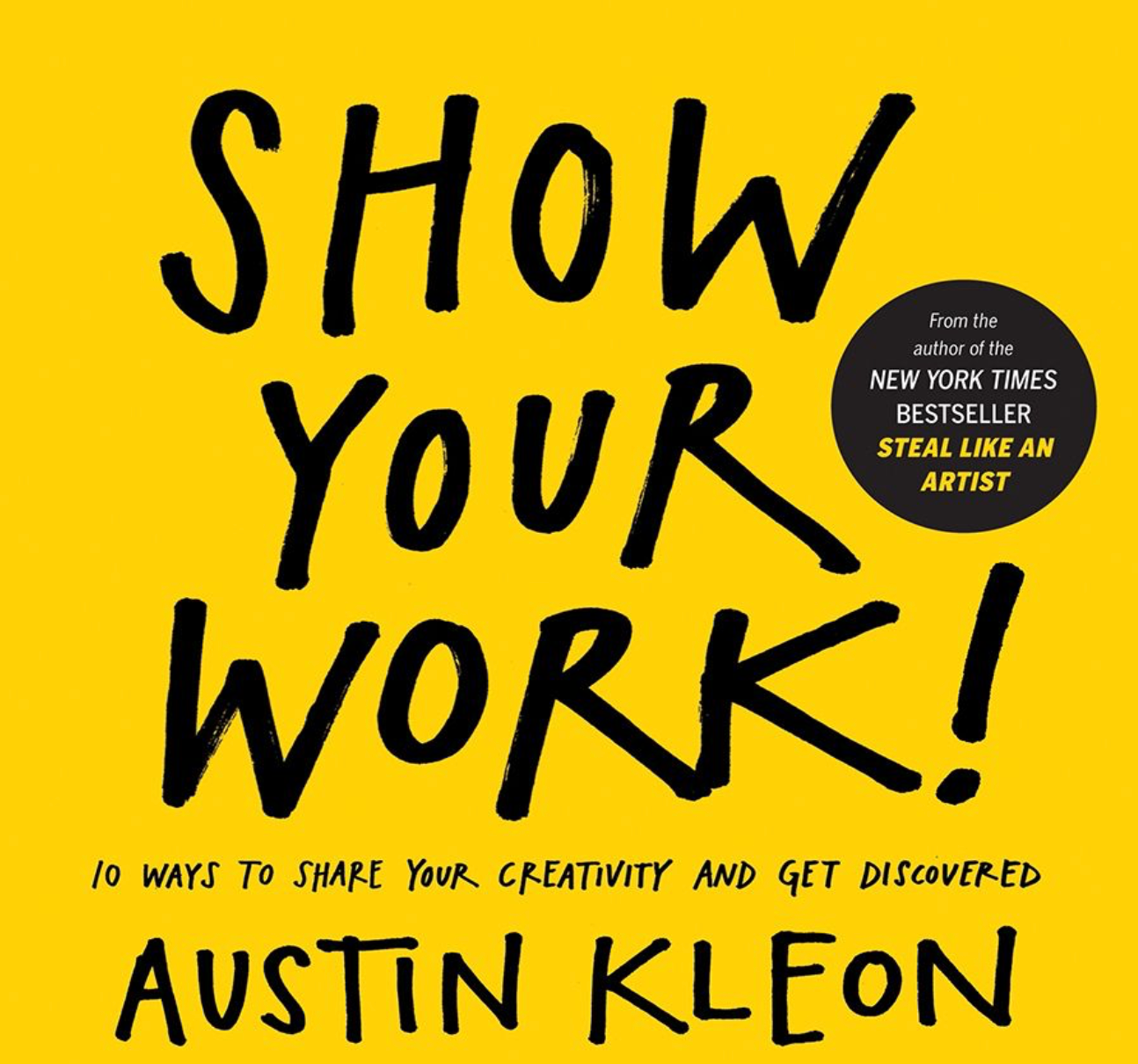
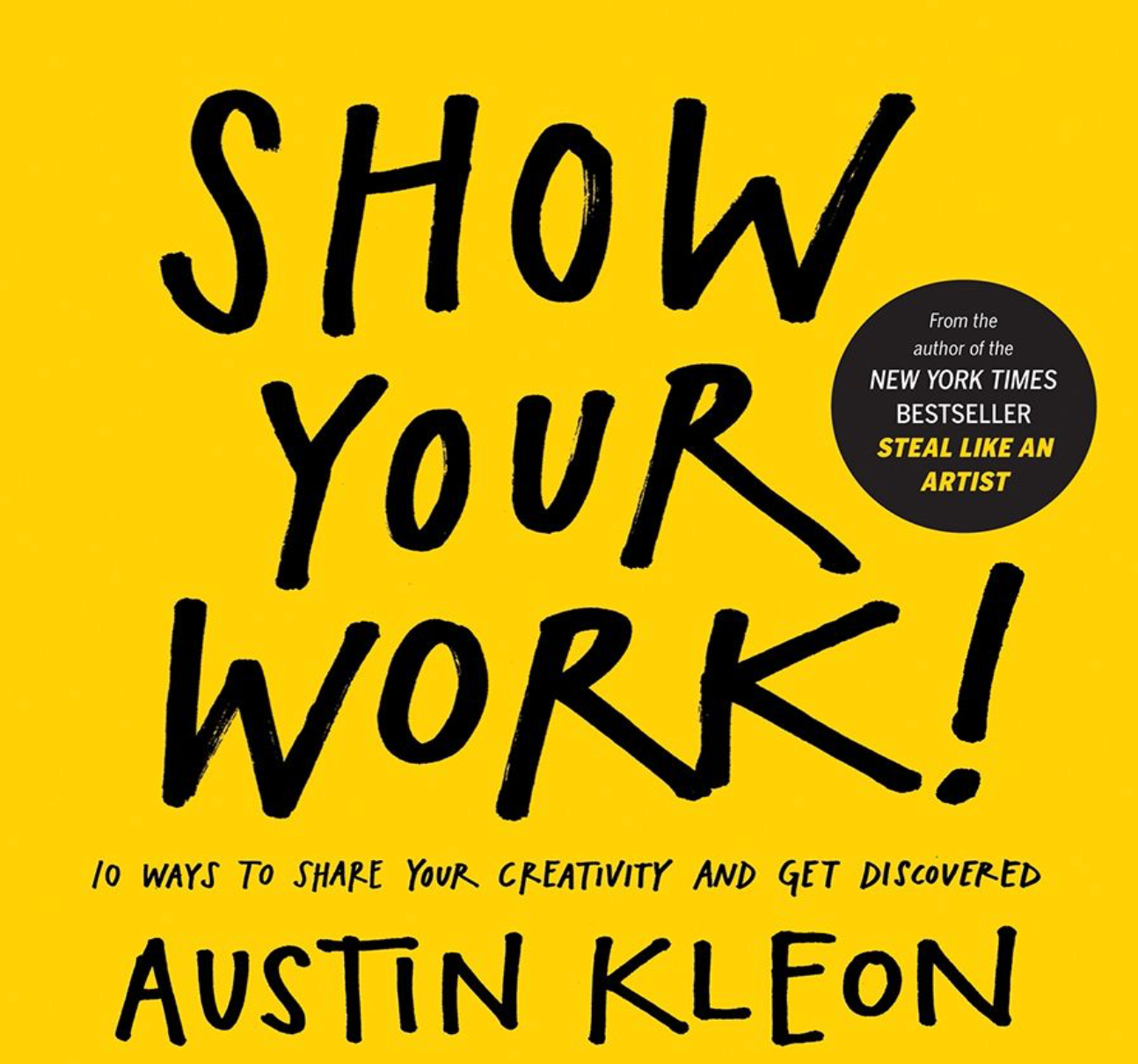
🚀 My summary in a few sentences
- Start a website and start documenting your progress on the type of work you're doing, whether it's actually work-related and/or hobby related. Websites stand the test of time, social media is ephemeral.
- You don't need to be an expert to share knowledge.
- By having an online presence, you have already told future employers and anyone who would love to collaborate with you what you have to offer and then some. You can meet new people, make new friends who share your niche interests in real life, and you do not actively need to spend time networking and more time on actually proving that you can do the work you have to offer.
🎨 My impressions
- I actually heard about this book through an Ali Abdaal video My Most Important Weekly Habit - YouTube and was
🤷🏽♂️ Who Should Read It?
- Everyone should read it. Even if you think you have nothing to share with the world, one day it will be advantageous to have an audience who cares about what you do. This audience is not merely an audience but a community of people with whom you can collaborate to bring out even more significant and greater ideas as a collective.
🔍 How I discovered it
I saw an Ali Abdaal video and post about this book, Show Your Work! by Austin Kleon: Summary, Notes & Highlights. In addition to this book, other influential YouTubers more or less encouraged similar themes in the book.
☘️ How it changed me
- I started my little turf on the internet at soroushtorkian.com
- I am sharing notes in the hopes of attracting like-minded people to improve upon each other's knowledge
✍️ Top Quotes
Instead of wasting their time “networking,” they’re taking advantage of the network. By generously sharing their ideas and their knowledge, they often gain an audience that they can then leverage when they need it—for fellowship, feedback, or patronage.
If we forget about genius and think more about how we can nurture and contribute to a scenius, we can adjust our own expectations and the expectations of the worlds we want to accept us. We can stop asking what others can do for us, and start asking what we can do for others.
No matter how famous they get, the forward-thinking artists of today aren’t just looking for fans or passive consumers of their work, they’re looking for potential collaborators, or co-conspirators. These artists acknowledge that good work isn’t created in a vacuum, and that the experience of art is always a two-way street, incomplete without feedback. These artists hang out online and answer questions. They ask for reading recommendations. They chat with fans about the stuff they love.
📒 Notes and Highlights
A New Way of Operating
Be so good they can't ignore you.
Instead of wasting their time “networking,” they’re taking advantage of the network. By generously sharing their ideas and their knowledge, they often gain an audience that they can then leverage when they need it—for fellowship, feedback, or patronage.
Don't waste too much time networking. Use the network to naturally generate an audience who will want to reach out to you through your mere visibility.
If Steal Like an Artist was a book about stealing influence from other people, this book is about how to influence others by letting them steal from you.
Both books touched upon the idea that there is no such thing as an original idea and that all our ideas existed before but are a remix of those previous ideas which have never been thought of as working together to create some breakthrough in how we do things. So it's OK to let others learn from you and for you to learn from others, although the book poorly worded it as "steal" for comedic effect.
Imagine if your next boss didn’t have to read your résumé because he already reads your blog. Imagine being a student and getting your first gig based on a school project you posted online. Imagine losing your job but having a social network of people familiar with your work and ready to help you find a new one. Imagine turning a side project or a hobby into your profession because you had a following that could support you.
No matter your profession, if somebody is interested in your work for job purposes or even if they're an audience, showing what you have done gives them a piece of mind about what kind of product you can produce.
Demystifying yourself by sharing allows networking to occur passively.
1. You Don't Have to Be a Genius.
If you look back closely at history, many of the people who we think of as lone geniuses were actually part of “a whole scene of people who were supporting each other, looking at each other’s work, copying from each other, stealing ideas, and contributing ideas.” Scenius doesn’t take away from the achievements of those great individuals; it just acknowledges that good work isn’t created in a vacuum, and that creativity is always, in some sense, a collaboration, the result of a mind connected to other minds.
Creativity is not for lone wolves. It occurs in an ecosystem of like-minded people.
If we forget about genius and think more about how we can nurture and contribute to a scenius, we can adjust our own expectations and the expectations of the worlds we want to accept us. We can stop asking what others can do for us, and start asking what we can do for others.
Scenius is the ecosystem I was talking about but in Austin Kleon's words. The whole ecosystem functions if we work for each other and not for ourselves the entire time.
you can move from mediocre to good in increments. The real gap is between doing nothing and doing something.” Amateurs know that contributing something is better than contributing nothing.
"Procrastination" is an evil that triumphs when good and productive people do NOTHING. Contributing to something is better than contributing nothing.
The world is changing at such a rapid rate that it’s turning us all into amateurs. Even for professionals, the best way to flourish is to retain an amateur’s spirit and embrace uncertainty and the unknown.
This is true for a lot of professions and not just the creative types.
The best way to get started on the path to sharing your work is to think about what you want to learn, and make a commitment to learning it in front of others.
One of the reasons I started my book reviews on this site is to show my commitment to learning in front of you guys. One day, if something special happens, you could probably trace back to exactly what I was doing and shared with you on this website.
start taking note of what they’re not sharing. Be on the lookout for voids that you can fill with your own efforts, no matter how bad they are at first. Don’t worry, for now, about how you’ll make money or a career off it. Forget about being an expert or a professional, and wear your amateurism (your heart, your love) on your sleeve.
While the book didn't influence me on this, I worked once on a mini-personal project. It was the blog post here and the video therein. The reason for doing this was that there wasn't a video about this topic bridging the gap between what the online calculators were calculating and why. On top of this, several people asked me how Chinese taxes worked and how they're paid. I made this video to help this demographic of expats all over China. A beginner leading other beginners, so to speak. While what I did was extremely niche, a few people have been emailing and commenting on the video about it with further questions ever since and I truly appreciate their trust in me (despite my very clear disclaimer saying I'm not a tax professional lol).
Ebert was blogging because he had to blog—because it was a matter of being heard, or not being heard. A matter of existing or not existing. It sounds a little extreme, but in this day and age, if your work isn’t online, it doesn’t exist.
While I won't go to the extremes of Ebert to blog, it is is incessant persistence that helped him build a portfolio that would eventually stick and that stickiness stuck onto bigger and bigger audiences.
If all this sounds scary or like a lot of work, consider this: One day you’ll be dead. Most of us prefer to ignore this most basic fact of life, but thinking about our inevitable end has a way of putting everything into perspective.
Use your inevitable death to justify doing something when you're living. Or, as the cool kids used to say back in the day, YOLO (responsibly, of course).
Try it: Start reading the obituaries every morning. Take inspiration from the people who muddled through life before you—they all started out as amateurs, and they got where they were going by making do with what they were given, and having the guts to put themselves out there. Follow their example.
There was this blog post I saw somewhere; it said that there are tons of books about people talking about things they have lived through so that you wouldn't have to make the same mistakes they did. While Kleon specifically talks about obituaries, I found that a bit morbid. I think anyone old and wise would qualify to talk about what kind of things they would have rather done with what they were given.
2. Think Process, Not Product.
But human beings are interested in other human beings and what other human beings do. “People really do want to see how the sausage gets made.”
I remember scrolling through TikTok to waste 2 minutes watching blacksmiths try to meld molten metal into something cylindrical. I didn't know what that cylinder was, but it was satisfying to watch the process, and it raised curiosities in my mind for other kinds of possibilities this type of work process can provide.
“By putting things out there, consistently, you can form a relationship with your customers. It allows them to see the person behind the products.”
Audience members feel more connected with you if they are more in the know about what you're doing. The less they see, the less they think they know you. This could be related to the idea of the "mere exposure" effect in psychology, where you feel like you're friends with someone or something just by the fact that you see that person or thing very often.
“Dad wanted a way to help people connect with the real side of what an astronaut’s life is,” said Hadfield’s son Evan. “Not just the glamour and science, but also the day-to-day activities.” Commander Hadfield wanted to show his work. Things fell into place when his sons explained social media to him and got him set up on Twitter and other social networks. During his next five-month mission, while performing all his regular astronautical duties, he tweeted, answered questions from his followers, posted pictures he’d taken of Earth, recorded music, and filmed YouTube videos of himself clipping his nails, brushing his teeth, sleeping, and even
performing maintenance on the space station. Millions of people ate it all up, including my agent, Ted, who tweeted, “Wouldn’t normally watch live video of a couple of guys doing plumbing repair, but IT’S IN SPACE!”
Even though many astronauts have done similar "video logs" on space stations, Chris took it to the next level by using modern technology like Twitter and social media to get the message out about what it's like to live in space.
We’re not all artists or astronauts. A lot of us go about our work and feel like we have nothing to show for it at the end of the day. But whatever the nature of your work, there is an art to what you do, and there are people who would be interested in that art, if only you presented it to them in the right way. In fact, sharing your process might actually be most valuable if the products of your work aren’t easily shared, if you’re still in the apprentice stage of your work, if you can’t just slap up a portfolio and call it a day, or if your process doesn’t necessarily lead to tangible finished products.
David Carr when he was asked if he had any advice for students. “No one is going to give a damn about your résumé; they want to see what you have made with your own little fingers.”
To be more accurate, employers would rather see something tangible than your words at an interview. They want recorded evidence, which the following quote from Austin Kleon's book further emphasizes:
Become a documentarian of what you do. Start a work journal: Write your thoughts down in a notebook, or speak them into an audio recorder. Keep a scrapbook. Take a lot of photographs of your work at different stages in your process. Shoot video of you working. This isn’t about making art, it’s about simply keeping track of what’s going on around you. Take advantage of all the cheap, easy tools at your disposal—these days, most of us carry a fully functional multimedia studio around in our smartphones.
Journal or make a diary of things you are in the process of doing, as it may prove valuable down the line.
Whether you share it or not, documenting and recording your process as you go along has its own rewards: You’ll start to see the work you’re doing more clearly and feel like you’re making progress. And when you’re ready to share, you’ll have a surplus of material to choose from.
This quote mentions something I heard a decade ago when I started frequenting bodybuilding.com for workout advice. In its "beginner workout program" newsletter, I was encouraged to take a selfie of myself at the beginning of my journey and take a photo every day. Now, I already feel like I'm making progress because I track the numerical weights I'm pushing and pulling, but the point is the gain is being recorded.
3. Share Something Small Everyday.
Show your progress one day at a time. It will look like a free and partial sample of the final product for your audience. They can look at your actions and then praise or criticize you. Feedback from others can help us see something good we missed. There is always time to do things; you need to find them.
While I'm not a one-hit-wonder, I did have a few videos go semi-viral on Douyin (Chinese Tiktok) with close to 90,000 views. However, only 3 out of 20 of my videos have been like this. Those 3 gave me at least 5000 fans and the most bang for my metaphorical buck, so I featured them at the top of my page. They are my Douyin "stocks." Now, if I were to upload more consistently and figure out what works and what doesn't, my "flowing" videos would become more and more enjoyable. Since many types of social media are ephemeral, through the recommendation of this book and several other people on the internet, I started my blog (this very site), where my words will hopefully still stand the test of time.
Once a day, after you’ve done your day’s work, go back to your documentation and find one little piece of your process that you can share. Where you are in your process will determine what that piece is. If you’re in the very early stages, share your influences and what’s inspiring you. If you’re in the middle of executing a project, write about your methods or share works in progress. If you’ve just completed a project, show the final product, share scraps from the cutting-room floor, or write about what you learned. If you have lots of projects out into the world, you can report on how they’re doing—you can tell stories about how people are interacting with your work. A daily dispatch is even better than a résumé or a portfolio, because it shows what we’re working on right now.
A good daily dispatch is like getting all the DVD extras before a movie comes out—you get to watch deleted scenes and listen to director’s commentary while the movie is being made. The form of what you share doesn’t matter. Your daily dispatch can be anything you want—a blog post, an email, a tweet, a YouTube video, or some other little bit of media. There’s no one-size-fits-all plan for everybody.
The trouble is, we don’t always know what’s good and what sucks. That’s why it’s important to get things in front of others and see how they react. “Sometimes you don’t always know what you’ve got,” says artist Wayne White. “It really does need a little social chemistry to make it show itself to you sometimes.”
Don’t say you don’t have enough time. We’re all busy, but we all get 24 hours a day. People often ask me, “How do you find the time for all this?” And I answer, “I look for it.” You find time the same place you find spare change: in the nooks and crannies. You find it in the cracks between the big stuff—your commute, your lunch break, the few hours after your kids go to bed. You might have to miss an episode of your favorite TV show, you might have to miss an hour of sleep, but you can find the time if you look for it. I like to work while the world is sleeping, and share while the world is at work.
“Post as though everyone who can read it has the power to fire you.” Be open, share imperfect and unfinished work that you want feedback on, but don’t share absolutely everything. There’s a big, big difference between sharing and over-sharing.
“Stock and flow” is an economic concept that writer Robin Sloan has adapted into a metaphor for media: “Flow is the feed. It’s the posts and the tweets. It’s the stream of daily and sub-daily updates that remind people you exist. Stock is the durable stuff. It’s the content you produce that’s as interesting in two months (or two years) as it is today. It’s what people discover via search. It’s what spreads slowly but surely, building fans over time.” Sloan says the magic formula is to maintain your flow while working on your stock in the background.
When you detect these patterns, you can start gathering these bits and pieces and turn them into something bigger and more substantial. You can turn your flow into stock. For example, a lot of the ideas in this book started out as tweets, which then became blog posts, which then became book chapters. Small things, over time, can get big.
More than 10 years ago, I staked my own little Internet claim and bought the domain name austinkleon.com. I was a complete amateur with no skills when I began building my website: It started off bare bones and ugly. Eventually, I figured out how to install a blog, and that changed everything. A blog is the ideal machine for turning flow into stock: One little blog post is nothing on its own, but publish a thousand blog posts over a decade, and it turns into your life’s work. My blog has been my sketchbook, my studio, my gallery, my storefront, and my salon. Absolutely everything good that has happened in my career can be traced back to my blog. My books, my art shows, my speaking gigs, some of my best friendships—they all exist because I have my own little piece of turf on the Internet.
4. Open Up Your Cabinet of Curiosities.
There is a saying I heard somewhere, "You are the average of your five closest friends." I want to extend this to "you are the average of the five people you spend your time on for inspiration."
Do or do not. There is no try. Similarly, like or do not like, there is no "secretly like" or "guilty pleasure." Being yourself and connecting with people genuinely is a way to tell the community you are in this together and that no one has the higher ground here. Yes, I did make two Star Wars references.
You may have already seen me do this on my social media handles. If all roads lead to Rome, then all my social media handles should lead you to my site if you are curious enough about what kind of exciting stuff I have to offer :).
Where do you get your inspiration? What sorts of things do you fill your head with? What do you read? Do you subscribe to anything? What sites do you visit on the Internet? What music do you listen to? What movies do you see? Do you look at art? What do you collect? What’s inside your scrapbook? What do you pin to the corkboard above your desk? What do you stick on your refrigerator? Who’s done work that you admire? Who do you steal ideas from? Do you have any heroes? Who do you follow online? Who are the practitioners you look up to in your field? Your influences are all worth sharing because they clue people in to who you are and what you do—sometimes even more than your own work.
“I don’t believe in guilty pleasures. If you f---ing like something, like it.”—Dave Grohl
When you find things you genuinely enjoy, don’t let anyone else make you feel bad about it. Don’t feel guilty about the pleasure you take in the things you enjoy. Celebrate them. When you share your taste and your influences, have the guts to own all of it. Don’t give in to the pressure to self-edit too much. Don’t be the lame guys at the record store arguing over who’s the more “authentic” punk rock band. Don’t try to be hip or cool. Being open and honest about what you like is the best way to connect with people who like those things, too.
So, what makes for great attribution? Attribution is all about providing context for what you’re sharing: what the work is, who made it, how they made it, when and where it was made, why you’re sharing it, why people should care about it, and where people can see some more work like it. Attribution is about putting little museum labels next to the stuff you share.
Online, the most important form of attribution is a hyperlink pointing back to the website of the creator of the work. This sends people who come across the work back to the original source. The number one rule of the Internet: People are lazy. If you don’t include a link, no one can click it. Attribution without a link online borders on useless: 99.9 percent of people are not going to bother Googling someone’s name.
5. Tell Good Stories.
Sometimes the story behind the piece of work is the selling point of the piece of work. How could you tell them apart if a fake piece of art and an authentic one were compared side to side and were found to have no physical differences? If someone more knowledgeable about the work demystifies that for you, why would you pick the authentic one? That's where attribution or the "backstory" behind the piece becomes more important than itself. Your work sometimes does NOT speak for itself. Start learning how to tell good stories. Be clear and concise, and get to the point, as people do not have long attention spans. Keep the language simple.
“And if that’s right, it shouldn’t matter whether it’s an original or a forgery.” But our brains don’t work that way. “When shown an object, or given a food, or shown a face, people’s assessment of it—how much they like it, how valuable it is—is deeply affected by what you tell them about it.”
Words matter. Artists love to trot out the tired line, “My work speaks for itself,” but the truth is, our work doesn’t speak for itself. Human beings want to know where things came from, how they were made, and who made them. The stories you tell about the work you do have a huge effect on how people feel and what they understand about your work, and how people feel and what they understand about your work effects how they value it.
[...] every cover letter, every fund-raising request—they’re all pitches. They’re stories with the endings chopped off. A good pitch is set up in three acts: The first act is the past, the second act is the present, and the third act is the future. The first act is where you’ve been—what you want, how you came to want it, and what you’ve done so far to get it. The second act is where you are now in your work and how you’ve worked hard and used up most of your resources. The third act is where you’re going, and how exactly the person you’re pitching can help you get there. Like a Choose Your Own Adventure book, this story shape effectively turns your listener into the hero who gets to decide how it ends.
Whether you’re telling a finished or unfinished story, always keep your audience in mind. Speak to them directly in plain language. Value their time. Be brief. Learn to speak. Learn to write. Use spell-check.
6. Teach What You Know.
“The impulse to keep to yourself what you have learned is not only shameful, it is destructive. Anything you do not give freely and abundantly becomes lost to you. You open your safe and find ashes.”—Annie Dillard
On Reddit and other places, people occasionally ask, "what should I do with my book notes." Well, why were the notes taken in the first place? Tiago Forte, the author of "Building a Second Brain," often says that your highlighted notes should be attached to a specific project in mind and not just done to be kept in the ether just in case. This question can be answered by the entirety of Austin Kleon's book.
The minute you learn something, turn around and teach it to others. Share your reading list. Point to helpful reference materials. Create some tutorials and post them online. Use pictures, words, and video. Take people step-by-step through part of your process. As blogger Kathy Sierra says, “Make people better at something they want to be better at.”
Teaching people doesn’t subtract value from what you do, it actually adds to it. When you teach someone how to do your work, you are, in effect, generating more interest in your work. People feel closer to your work because you’re letting them in on what you know.
Teaching people gives them knowledge, inspiration, and many more reasons to follow your work even more.
Best of all, when you share your knowledge and your work with others, you receive an education in return. Author Christopher Hitchens said that the great thing about putting out a book is that “it brings you into contact with people whose opinions you should have canvassed before you ever pressed pen to paper. They write to you. They telephone you. They come to your bookstore events and give you things to read that you should have read already.” He said that having his work out in the world was “a free education that goes on for a lifetime.”
7. Don't Turn Into Human Spam.
[Human spam] ... don’t want to pay their dues, they want their piece right here, right now. They don’t want to listen to your ideas; they want to tell you theirs. They don’t want to go to shows, but they thrust flyers at you on the sidewalk and scream at you to come to theirs. You should feel pity for these people and their delusions. At some point, they didn’t get the memo that the world owes none of us anything.
No matter how famous they get, the forward-thinking artists of today aren’t just looking for fans or passive consumers of their work, they’re looking for potential collaborators, or co-conspirators. These artists acknowledge that good work isn’t created in a vacuum, and that the experience of art is always a two-way street, incomplete without feedback. These artists hang out online and answer questions. They ask for reading recommendations. They chat with fans about the stuff they love.
If, after hanging out with someone you feel worn out and depleted, that person is a vampire. If,
Vampires cannot be cured. Should you find yourself in the presence of a vampire, [...] banish it from your life forever.
Vampire refers to people that completely wear you out rather than give you energy
8. Learn to Take a Punch.
If certain pieces of work are too sensitive to show to the world, you don't need to show them. However, if you don't open the door to people in your life, why should anyone care about you or your work? Secondly, it does matter whose opinions you care about. Maybe there are a few "right" people, like family and friends, whose views you should care about. However, you do not need to let trolls live in your head rent-free.
Roll with the punches. Keep moving. Every piece of criticism is an opportunity for new work. You can’t control what sort of criticism you receive, but you can control how you react to it. Sometimes when people hate something about your work, it’s fun to push that element even further. To make something they’d hate even more. Having your work hated by certain people is a badge of honor.
Protect your vulnerable areas. If you have work that is too sensitive or too close to you to be exposed to criticism, keep it hidden. But remember what writer Colin Marshall says: “Compulsive avoidance of embarrassment is a form of suicide.” If you spend your life avoiding vulnerability, you and your work will never truly connect with other people.
Keep your balance. You have to remember that your work is something you do, not who you are. This is especially hard for artists to accept, as so much of what they do is personal. Keep close to your family, friends, and the people who love you for you, not just the work.
“The trick is not caring what EVERYBODY thinks of you and just caring about what the RIGHT people think of you.”—Brian Michael Bendis
Now, I have been on the Internet a long time. I get a lot of emails from people who are, as far as I can tell, sad, awful, or completely insane. I have a pretty good mental firewall that filters what I let get to me. This woman got to me. Because, of course, the worst troll is the one that lives in your head. It’s the voice that tells you you’re not good enough, that you suck, and that you’ll never amount to anything. It’s the voice that told me I’d never write another good word after becoming a father. It is one thing to have the troll in your brain, it is another thing to have a stranger hold a megaphone up to it and let it shout. Do you have a troll problem? Use the block button on social media sites. Delete nasty comments. My wife is fond of saying, “If someone took a dump in your living room, you wouldn’t let it sit there, would you?” Nasty comments are the same—they should be scooped up and thrown in the trash.
9. Sell Out
The book is a little cynical here, but money does indeed help drive a lot of things forward. There are overhead costs to creative endeavours as much as they exist for any other type of business. Basic economics is that things work out better for both parties if something of equal sentimental or monetary value is exchanged to drive some project further. Give, and you shall receive.
How we sell a product can come in different ways. If the crowd funds it, the group is our boss. But depending on how many units of some product we sell, we have more leeway over our creative endeavours. Austin Kleon chooses the latter for his business, but both have merits.
Use email newsletters to send emails to people willing to have you in their lives. In many cases, these people already see value in what you do and are more inclined to purchase a product to support what you do. The point is, stay away from being a salesman on every platform you are on and only target a specific demographic, which in this case are more likely to be the people who consume what you do through your newsletter.
To prevent burnout, you don't need to say yes to every opportunity or reply to every.... single... email. At some point, saying NO helps you not only in terms of mental health but also in igniting your creative sparks.
We all have to get over our “starving artist” romanticism and the idea that touching money inherently corrupts creativity. Some of our most meaningful and most cherished cultural artifacts were made for money. Michelangelo painted the Sistine Chapel ceiling because the pope commissioned him.
There are certainly some strings attached to crowdfunding—when people become patrons, they feel, not altogether wrongly, that they should have some say in how their money is being used. It’s partly for this reason that my business model is still pretty old-fashioned: I make something and sell it for money. Instead of having a donate now button on my website, I have buy now and hire me buttons. But even though I operate more like a traditional salesman, I do use some of the same tactics as crowdfunders: I try to be open about my process, connect with my audience, and ask them to support me by buying the things I’m selling.
Whether you ask for donations, crowdfund, or sell your products or services, asking for money in return for your work is a leap you want to take only when you feel confident that you’re putting work out into the world that you think is truly worth something. Don’t be afraid to charge for your work, but put a price on it that you think is fair.
Keep your own list, or get an account with an email newsletter company like MailChimp and put a little sign-up widget on every page of your website. Write a little bit of copy to encourage people to sign up. Be clear about what they can expect, whether you’ll be sending daily, monthly, or infrequent updates. Never ever add someone’s email address to your mailing list without her permission.
The people who sign up for your list will be some of your biggest supporters, just by the simple fact that they signed up for the potential to be spammed by you. Don’t betray their trust and don’t push your luck. Build your list and treat it with respect. It will come in handy.
doing good work and taking advantage of every opportunity that comes your way. “I really like saying yes. I like new things, projects, plans, getting people together and doing something, trying something, even when it’s corny or stupid.” The people who holler “Sellout!” are all hollering “No!” They’re the people who don’t want things to ever change.
Be ambitious. Keep yourself busy. Think bigger. Expand your audience. Don’t hobble yourself in the name of “keeping it real,” or “not selling out.”
At some point, you have to switch from saying “yes” a lot to saying “no” a lot.
10. Stick Around.
Do not quit prematurely. Work in chains. Once you finish one creative project, start working on another. [[Work in chains because work stops when you stop]]. You can use old project ideas and remix them with newer ones. Reflect upon each project once you're finished and see how you could do something similar or better in the next one. Never stop learning or assume you have finished learning what there is to learn. Always look for more inspiration and ways to become a student again. As mentioned in previous chapters, always document your learning or progress in what you're doing and share it with the world.
The people who get what they’re after are very often the ones who just stick around long enough. It’s very important not to quit prematurely.
“In our business you don’t quit,” says comedian Joan Rivers. “You’re holding on to the ladder. When they cut off your hands, hold on with your elbow. When they cut off your arms, hold on with your teeth. You don’t quit because you don’t know where the next job is coming from.”
If only life were like “reality” TV! As every author knows, your last book isn’t going to write your next one for you. A successful or failed project is no guarantee of another success or failure. Whether you’ve just won big or lost big, you still have to face the question “What’s next?”
The day he finishes editing a film is the day he starts writing the script for the next. Bob Pollard, the lead singer and songwriter for Guided by Voices, says he never gets writer’s block because he never stops writing. Author Ernest Hemingway would stop in the middle of a sentence at the end of his day’s work so he knew where to start in the morning. Singer/songwriter Joni Mitchell says that whatever she feels is the weak link in her last project gives her inspiration for the next.
You avoid stalling out in your career by never losing momentum. Here’s how you do it: Instead of taking a break in between projects, waiting for feedback, and worrying about what’s next, use the end of one project to light up the next one. Just do the work that’s in front of you, and when it’s finished, ask yourself what you missed, what you could’ve done better, or what you couldn’t get to, and jump right into the next project.
When you feel like you’ve learned whatever there is to learn from what you’re doing, it’s time to change course and find something new to learn so that you can move forward. You can’t be content with mastery; you have to push yourself to become a student again.
Look for something new to learn, and when you find it, dedicate yourself to learning it out in the open. Document your progress and share as you go so that others can learn along with you. Show your work, and when the right people show up, pay close attention to them, because they’ll have a lot to show you.
Go online and post what you’re working on right now with the tag #showyourwork. Plan a “Show Your Work!” night with colleagues or friends. Use this book as a guide—share works-in-progress and your curiosities, tell stories, and teach one another. Give a copy of this book away to somebody who needs to read it.
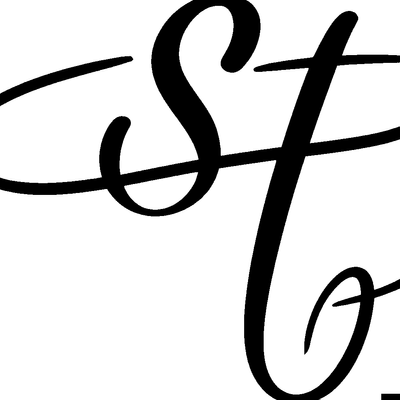
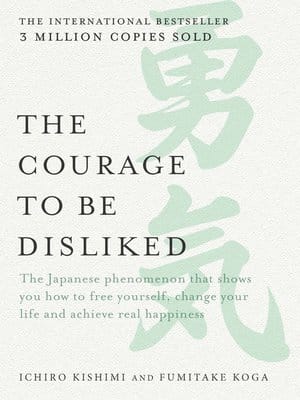
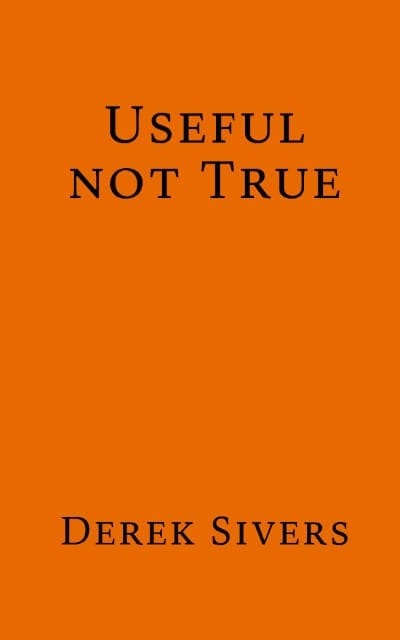
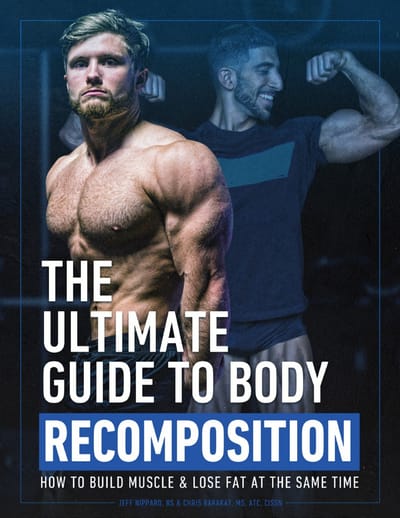
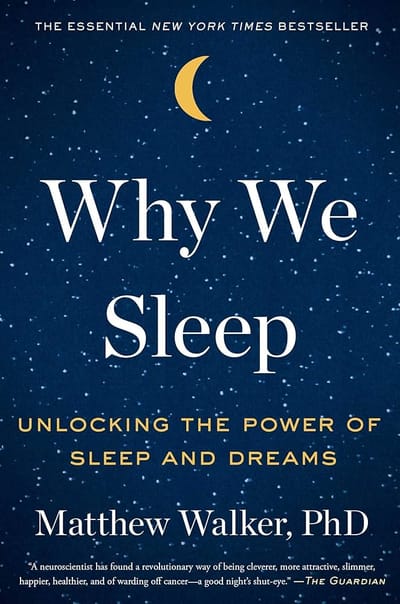
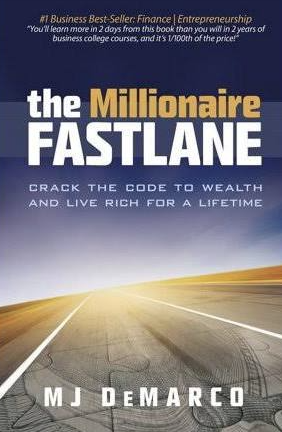
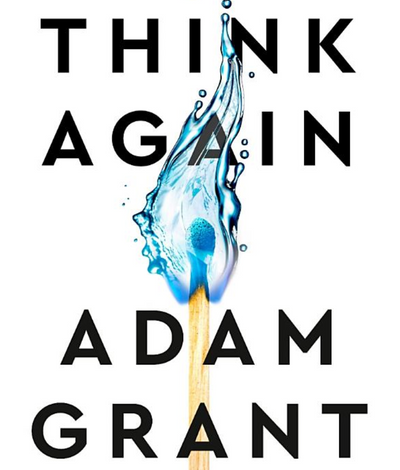
Member discussion